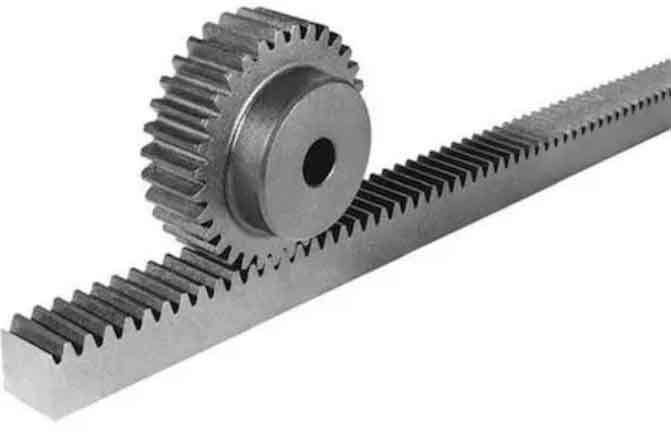
As technology advances, rack and pinion gear systems continue to benefit from innovations that drive future applications and expand their capabilities. These innovations are geared towards improving precision, efficiency, durability, and versatility. Here are some of the key innovations in rack and pinion gear technology that are shaping the future of their applications:
1. Advanced Materials and Coatings:
Innovative materials and surface coatings are being developed to enhance the wear resistance and reduce friction in rack and pinion gears. The use of advanced materials, such as high-strength alloys and composites, contributes to increased gear lifespan and improved performance under demanding conditions.
2. High-Precision Manufacturing Techniques:
Advancements in manufacturing processes, such as additive manufacturing (3D printing) and advanced machining techniques, allow for more precise and complex gear designs. These techniques enable the production of custom-designed rack and pinion gears with tight tolerances, leading to improved performance and reliability.
3. Integrated Smart Systems:
Incorporating smart technologies into rack and pinion gear systems enables real-time monitoring of gear health and performance. Sensors embedded within the gears can provide valuable data on temperature, vibration, and wear, allowing for predictive maintenance and preventing unexpected failures.
4. Self-Lubricating Gears:
Developments in self-lubricating materials and coatings eliminate the need for external lubrication, reducing maintenance requirements and minimizing the risk of gear failure due to inadequate lubrication.
5. Noise Reduction Technology:
Innovations in gear tooth profiling and surface treatments help reduce gear noise and vibration, making rack and pinion gears more suitable for noise-sensitive applications.
6. Energy-Efficient Designs:
Advancements in gear tooth profiles and optimizations in gear design contribute to increased mechanical efficiency, leading to reduced power consumption and improved energy efficiency in rack and pinion gear systems.
7. Miniature and Micro Gear Technology:
In some emerging applications, such as micro-robotics and medical devices, there is a need for miniature rack and pinion gear systems. Innovations in miniaturization techniques enable the development of tiny gear systems with high precision and reliability.
8. Gear System Simulation and Analysis Software:
The use of advanced simulation and analysis software allows engineers to model and optimize rack and pinion gear systems more effectively. Virtual prototyping helps identify potential design improvements and predict gear performance before physical prototypes are created.
9. Green and Sustainable Solutions:
In response to environmental concerns, there is growing interest in developing environmentally friendly gear technologies. Innovations in sustainable materials, lubricants, and manufacturing processes contribute to greener rack and pinion gear systems.
10. Application-Specific Designs:
With advancements in computer-aided design (CAD) and simulation tools, rack and pinion gear systems can be tailored for specific applications, optimizing their performance, reliability, and efficiency.
These innovations in rack and pinion gear technology are opening up new possibilities in various industries, including robotics, automation, automotive, aerospace, and more. By continuously improving gear designs, materials, and manufacturing techniques, engineers are driving the future of rack and pinion gear applications, making them more capable, versatile, and efficient in meeting the evolving needs of modern industries.
